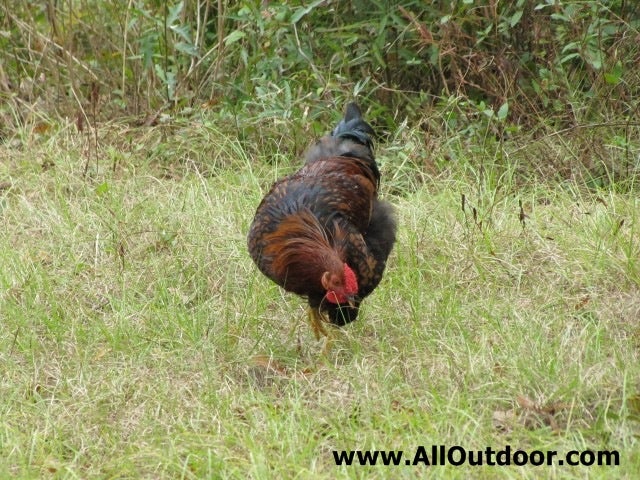Adding a New Rooster to the Flock
Kevin Felts 10.19.16

The easiest way to describe adding a new rooster to the flock is like a teenage boy going to a new school. New kid joins the group and just about everyone has to show off.
The dominant rooster will probably go over to the new rooster and jump on him. This is to show the new kid who is boss. Kinda like teenage boys picking a fight with the new kid. Everyone has to show how big and bad they are.
The dominant hen will probably also jump on the new rooster. She wants to maintain her top place in the pecking order.
After around 2 weeks, things will settle down and the flock will reestablish the pecking order. The pecking order defines who eats first and who gets to pick their spot on the roost. If a lower hen is in the way of the dominant hen, the dominant rooster will peck the lower hen on the head. Same goes for roosters.
The chickens fighting when a new one is introduced is normal animal behavior that exists in just about all social structures.
There are things that can you do to facilitate adding a new rooster and hen.
Room
When chickens are bunched up together they develop bad habits, such as feather pulling and fighting. Just like people, chickens need room to keep tensions down. How much room do chickens need? As much as possible, but otherwise:
- Minimum 10 square feet in the chicken yard or run.
- Minimum 3 square feet in the chicken house.
- Minimum 1 square foot on the perch, which I consider too little room. I like to give my chickens plenty of room on their perch.
The more room the flock has, the more room the new guy has to get away from aggressive roosters and hens. The new guy will probably stay on the outside of the flock, then approach when he feels the time is right. He may see some hens away from the flock and will approach the hens.
Food and Water
Set out an extra feeder and waterer away from the usual ones. This gives the new chicken a way to eat and drink without having to be in with the whole flock. The idea is to keep tensions down for the first couple of weeks.
For my new rooster I set a feeder out and two warterers. One waterer near the new feeder and one waterer 10 or 15 feet away from the feeder.
The chickens still have their feeders and waterer in the chicken house. Rather than the new chicken having to go into the chicken house, he can stay outside and have access to food and water.
Patience and Understanding
Do not interfere with the flock reestablishing the pecking order. If the new chicken is injured, remove it from the flock, take care of it, then reintroduce it. Removing the new chicken, adding it again, removing it, adding it again, etc., does nothing but stresses the flock.
The chicken flock needs time to take care of its hierarchy. Give the flock its room and let them sort it out themselves.
Hen to Rooster Ratio
If the flock contains too few hens, the roosters will fight over them, and this stresses the flock. Each rooster should have enough hens for him to create his own harem.
The number I have heard is at least 10:1, ten hens for every one rooster.
Hens that are not in a harem will wander away from the flock and put themselves in a position to be attacked by a predator. If a hen wanders away from the harem, another rooster may try to get her into his harem. If the rooster that maintains the harem to which the hen belongs sees this, the two roosters may fight over the hen.
Then there is the fertility rate. Do you want hens hatching eggs? Too few roosters means the eggs will not get fertilized. Too many roosters stresses the hens as the roosters are always trying to mate with the hens.
Maintaining a Genetically Healthy Flock
The rooster I added to the flock was 1/2 Rhode Island Red and 1/2 Australorp. He is the grandson of my existing rooster, which is full bloodied Rhode Island Red. Couple of years ago I loaned the Rhode Island Red rooster to my cousin so her hens could hatch chicks. Once her flock got established she gave the Rhode Island Red back. The rooster I added came from my cousin’s flock and the grandson of the older rooster.
Next spring I am thinking about adding some more hens and a Buff Orpington rooster. Both my roosters are related, which does not make for a very good gene pool. To help prevent against inbreeding down the line I may need to add a new rooster. The Buff Orpington is a wonderful breed of chicken. I have several Buff Orpington hens in the flock already. So why not add some more next spring?